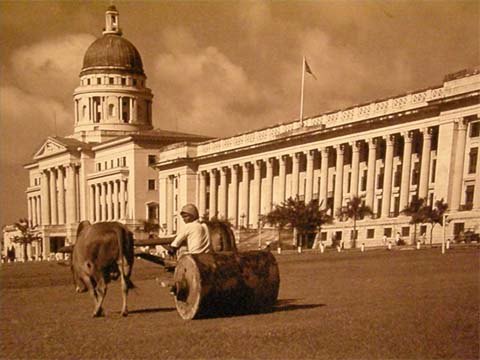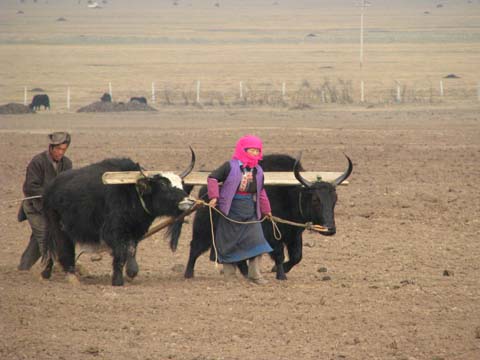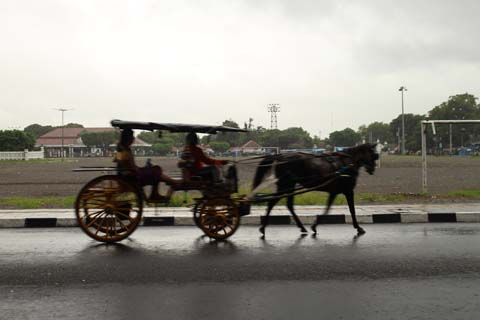
Making small provisions to enable people to upskill through bite-sized training courses will not be enough to cope with a world in which lifelong continuous learning and career switching has become necessary — I argued this in my previous post Spreading a bit of money to “position Singapore for the future”. But in the interest of length, I left untouched an even bigger question: What if, for all the retraining, adjustments and preparations we make, there simply isn’t enough work to be had? It’s a question that’s not only for Singapore.
Let’s switch for a moment to the issue of universal basic income. This concept is coming up more and more in discussion. In a few places in Europe, pilot experiments are being planned, in order to obtain empirical data about its effects. A good part of the interest in universal basic income is due to a realisation that income and wealth inequality have not only grown considerably in the last few decades, they look like they’re likely to become permanent and structural. Progressive taxation and targetted benefit schemes may be solutions, but if they are complex, they can become unwieldy and cost ineffective to deliver. Universal basic income is believed to be not only cheaper to administer, as social intervention it is in a different order of magnitude.
It is not my intention to get into a discussion of universal basic income here. I merely want to draw your attention to the underlying concern that a high degree of economic inequality may be a fixture of the landscape for the foreseeable future.
Unarguably, the spread of neoliberal capitalism and its handmaiden, globalisation, played a huge part in creating the inequalities we see today. But globalisation is also an outcome of technological change, and technology being what it is, there’s no putting the genie back into the bottle.
Inequality and technological change
With respect to inequality, perhaps the phrase “we ain’t seen nothing yet” applies. I want to contemplate here the possibility that it will get much much worse. It may be that we’re not even going to be debating about fair wages in the decades to come; we will more likely be wondering whether there is any paid work to be had for something like half of the population who might be seeking work. It will take enormous imagination to find fiscal and social solutions to this problem, failing which, we may suffer massive unrest. Something tells me that universal basic income will be unavoidable. It may come to be seen as a compelling public interest. To be debating about fine details of how to finance it within the present paradigms of taxation and fiscal governance would be like asking whether it is economically justified to provide clean piped water to everyone and whether the tax on silks and snuff will ever be sufficient to pay for it (will the upper class revolt if we raised their taxes?). You don’t ponder that question; you just go ahead and do it and then find a way to pay for it.
That we are undergoing enormous technological change is obvious to almost all. Whole occupations have been wiped out by technology, and it does not take much clairvoyance to know that many more jobs will soon be obsolete. Even China, with its vast labour force, is on the cusp of widespread robotisation. Foxconn, a huge contract manufacturer, is on a determined path to replace 500,000 humans with one million robots. So far, it has proven more difficult to realise than envisioned, but no one should doubt that this goal (and more) will eventually be reached.
Read also this article in the Economist magazine which describes a new factory that Adidas is building to manufacture trainers. It will be chockful of robots, computerised knitting and additive manufacturing (also called 3D printing). It will require only about 160 humans to make 500,000 pairs a year, replacing the thousand employees or more in a typical factory today.
Yet, the common response to the present technological revolution tends to be sanguine. People cite the industrial revolution and the huge population growth the world has seen since then as an example of how — somehow — we will find new kinds of work for people to do. We may not be able to describe exactly what sort of work will be available, but we can trust that it will be there. Thus the importance attached to lifelong continuous learning.
My point is not that there is nothing to be gained from lifelong learning. Quite the opposite, I believe it is absolutely essential. That said, the thought experiment here is this: That, for all the new skills people may acquire, there still will not be enough work to go around.
Yes, the industrial revolution is an apt example, but to draw the right lesson from it, we must remove the anthropocentric lenses from our eyes.
The lesson from the industrial revolution
What happened that defined the industrial revolution? It was that humans invented a way to produce power unconnected with beast. It is no accident that today we hold the steam engine as the iconic invention that exemplified the revolution. Prior to the industrial revolution, the weakling that was Homo sapiens needed horses, mules, elephants, camels and buffaloes, depending on which part of the world you were in, to provide power and endurance.

Yaks ploughing a field in Tibetan country
If we needed to pull a wagon or a chariot, we got a beast. If we needed to pull a heavy plough through thick mud, we yoked one. If we needed a way to turn the grindstone round and round and round, we roped in a beast. If we needed to travel long distances at some speed, we whistled for one.
The domesticated beast was central to our economic activity, but it was also limiting. There was only that much power and endurance we could get from it. The animal’s nature and its genes set the upper ceiling. To be able to generate power from a non-beast source was the break-out technology. It freed us from the complications of having to deal with temperamental animals, and from limitations of their number and their power output. Within just a blink of an eye — if we see things from the perspective of the sweep of human history — machines replaced beasts in almost everything they once did; almost everything they once were essential in.
The industrial revolution did not produce an alternative to Homo sapiens. Our key attributes are (a) hand dexterity and (b) intelligence. They were safe from steam power and its engineered descendants. If anything, by expanding the availability of power beyond limits hitherto imposed by the size and reproductive capacity of beasts, we opened multifold new opportunities for using our dexterity and intelligence. With huge boilers and turbines producing electricity, we could dye and weave endless yards of cloth, which then required countless hands to cut and sew. With the internal combustion engine we could have millions of cars, trucks and buses, which then required millions of drivers. There was plenty of work to be had.

First we replace the horse, then we replace the driver
Today’s revolution will hit us the way the last one hit our beasts. Robots will render human dexterity quaint. Artificial intelligence (AI)… well, self-driving cars and facial recognition software are only the beginning.
What will happen when humans are replaced?
So, contemplate this: just as the industrial revolution put our beasts to pasture, what will the AI revolution do to us? A knee-jerk answer is that people need to go up the skill and creativity ladder. We must all be scientists and designers, doing “thinking” work. Alternatively, we crowd into care-giving work looking after the young, old and sick, which machines can’t easily replicate.
To the first, we again need a reality check. The great majority of Homo sapiens don’t have what it takes to be scientists and designers. In any case, how many do we need? How many can the economy afford? Before the industrial revolution, the majority of adults worked in farming and fishing, producing food. Today in developed countries, only about five percent of adults are in these occupations, and as it is, we have more than enough food. My guess is that a similar ratio will apply to our need for “thinking” professions.
As for care-giving work, it is admittedly harder to imagine a robotised future, because AI is still so new. But the other day I was reading an article about a manufacturer of sex dolls who claims he’s on his way to creating highly realistic products. Material science has come far enough to offer him a surface texture that feels like human skin, and with ever-improving AI, he expects to be manufacturing responsive dolls. If even the sex trade can dispense with humans, there are very few jobs that are safe!
It’s not hard therefore to glimpse a future where there simply isn’t enough paid work to go around. To avoid massive social unrest from high unemployment and a concomitantly high degree of social inequality, the idea of a universal basic income is trickling about.
Yet, even here, most thinkers aren’t taking another aspect into account: genetic engineering.
I don’t think we’re more than two generations away from an era when people can re-engineer themselves or their children to have superior intelligence and other valuable attributes (like beauty). Like all new and costly technologies, this will be accessed by those with power and wealth. Before long, there will be a class of superior humans, who naturally will dominate the thinking and designing jobs. Social mobility from the “lower” classes will be reduced simply because the gap will have widened so much. This is the thought that made me say above that, as far as inequality goes, we ain’t seen nothing yet.
When this happens, universal basic income will come under severe stress. One of the main underpinnings of social solidarity, which universal basic income ultimately is, is that we identify with the unlucky person as one of us. Another is the consciousness that what has happened to the other can happen to us too — the same social insurance that pays him today may benefit us tomorrow. But when these factors fade and the superior (engineered) species neither identifies with the lower (natural) species nor sees the other’s misfortune as a possibility upon itself, where goes solidarity?
It would then be entirely rational to argue that the madness of providing a universal basic income to a class of people who will forever be unemployed, and yet who continue to breed, must stop. After all, did we want to maintain as many horses or buffaloes as we once did? Of course, with humans, income support cannot stop abruptly. If it does, the violent blowback will have huge security implications for the superior species. But it may make sense to say: Here is your generous annuity for life, on the condition that you do not have offspring.
There you have it — an easy, totally logical, slide from universal basic income to “cull money”.


0 Responses to “There was once a buffalo here”